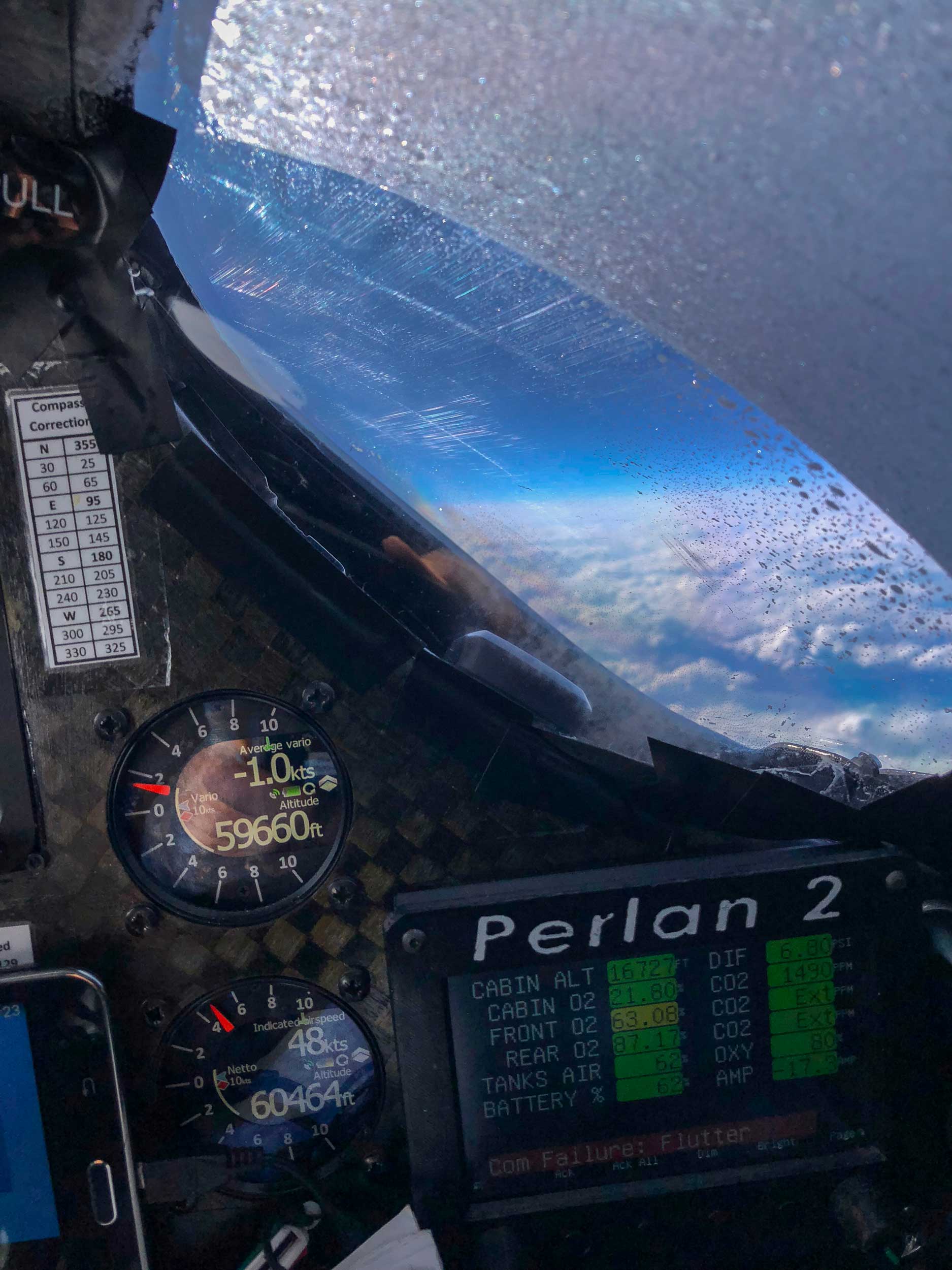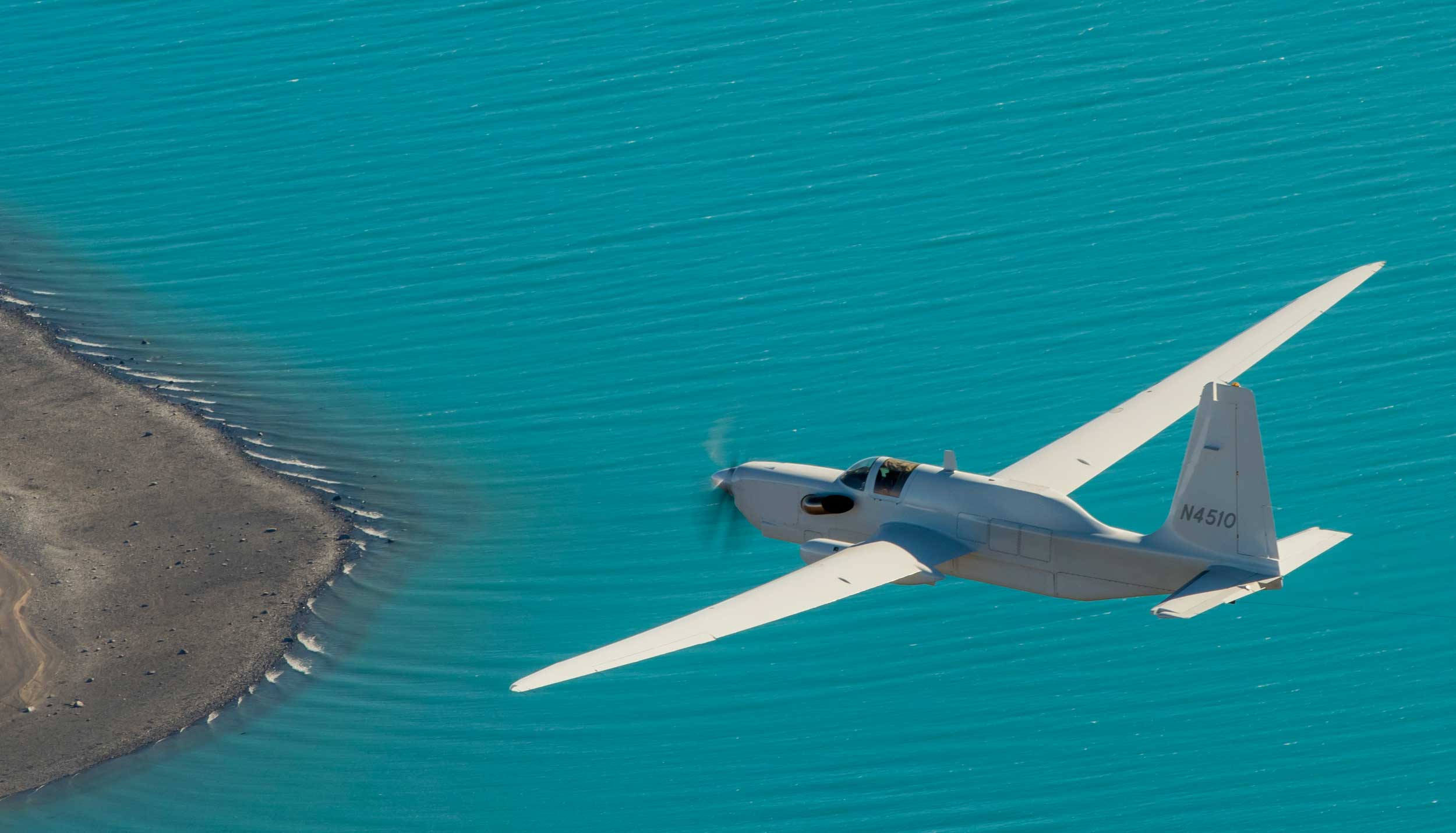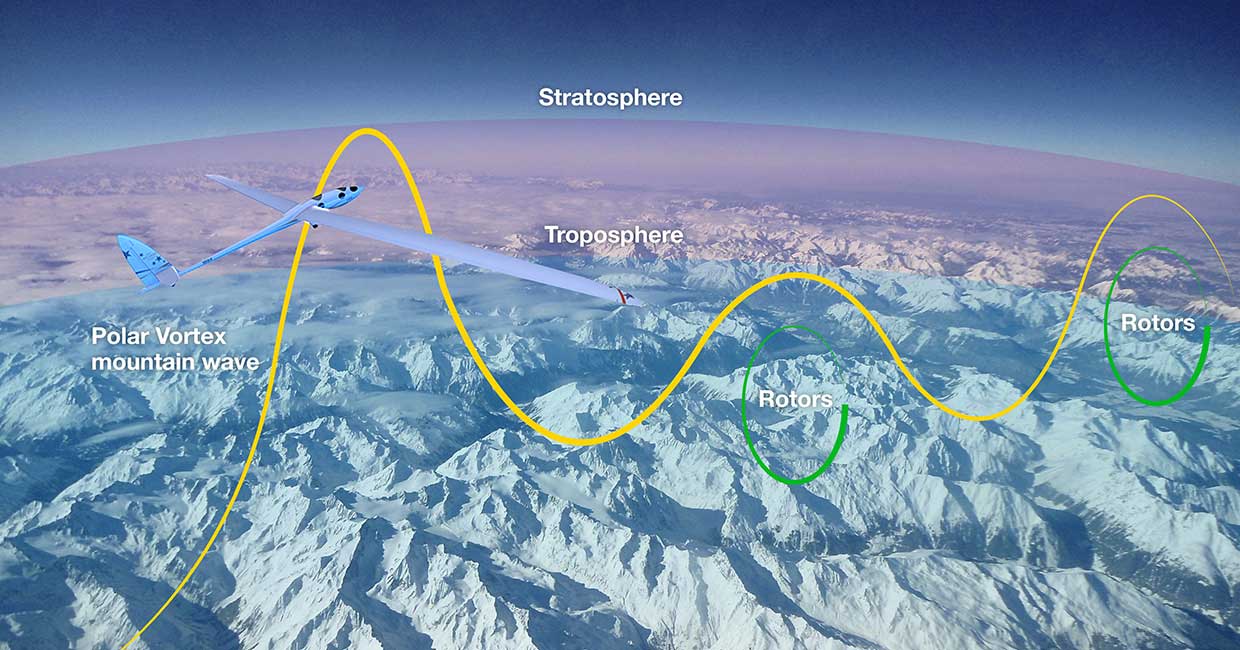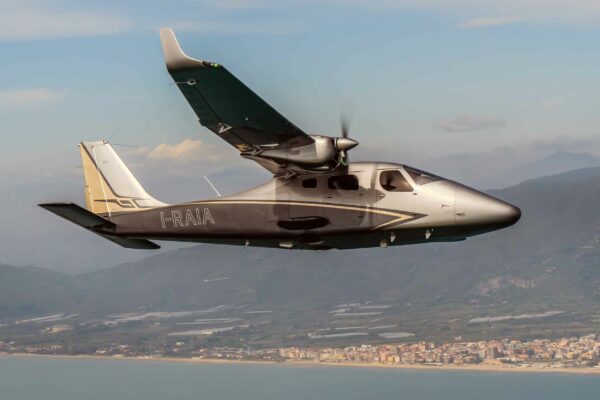The Perlan glider has set a new record by soaring to a pressure altitude of 62,000 feet – 60,669ft measured by GPS. The record still has to be validated by the FIA.
The Airbus-supported Perlan is an attempt to pilot an engineless aircraft to the edge of space, the stratosphere. The flights are being made from El Calafate, Argentina, where mountains and atmospheric conditions combine to create a mountain wave high enough.
The pressurised Perlan 2 glider is designed to soar to 90,000 feet and passed the Armstrong Line, the point in the atmosphere above which an unprotected human’s blood will boil if an aircraft loses pressurisation.
 This marks a second glider altitude world record for Jim Payne and Morgan Sandercock, the same two Perlan Project pilots who soared the Perlan 2 to 52,221 feet GPS altitude on 3 September 2017, in the same remote region of Argentine Patagonia.
This marks a second glider altitude world record for Jim Payne and Morgan Sandercock, the same two Perlan Project pilots who soared the Perlan 2 to 52,221 feet GPS altitude on 3 September 2017, in the same remote region of Argentine Patagonia.
“This is a tremendous moment for all the volunteers and sponsors of Airbus Perlan Mission II who have been so dedicated to making our nonprofit aerospace initiative a reality,” said Ed Warnock, CEA of The Perlan Project.
“Our victory today, and whatever other milestones we achieve this year, are a testament to a pioneering spirit of exploration that runs through everyone on the project and through the organisations that support us.”
Tom Enders, Airbus CEO, said, “Perlan Project is achieving the seemingly impossible, and our support for this endeavour sends a message to our employees, suppliers and competitors that we will not settle for being anything less than extraordinary.”
Another first-of-its kind achievement this year for the Perlan Project was the use of a special high-altitude tow plane rather than a conventional glider tow plane.

Perlan 2 was towed to the base of the stratosphere by a Grob Egrett G520 turboprop, a high-altitude reconnaissance plane modified for the task earlier this summer.
Operated by AV Experts, LLC, and flown by chief pilot Arne Vasenden, the Egrett released Perlan 2 at around 42,000 feet, the approximate service ceiling of an Airbus A380.

To soar into the highest areas of Earth’s atmosphere, Perlan 2 pilots catch a ride on stratospheric mountain waves, a weather phenomenon created when rising air currents behind mountain ranges are significantly strengthened by the polar vortex.
The phenomenon occurs only for a brief period each year in just a few places on earth. Nestled within the Andes Mountains in Argentina, the area around El Calafate is one of those rare locations where these rising air currents can reach to 100,000 feet or more.
Airbus Perlan Mission II



 This marks a second glider altitude world record for Jim Payne and Morgan Sandercock, the same two Perlan Project pilots who soared the Perlan 2 to 52,221 feet GPS altitude on 3 September 2017, in the same remote region of Argentine Patagonia.
This marks a second glider altitude world record for Jim Payne and Morgan Sandercock, the same two Perlan Project pilots who soared the Perlan 2 to 52,221 feet GPS altitude on 3 September 2017, in the same remote region of Argentine Patagonia.











1 comment
So that’s a height gain of 18000ft. Lots of us have done better than that.
To get up to 60,000ft is quite something.